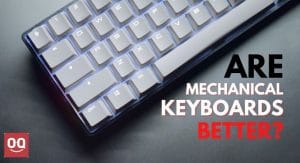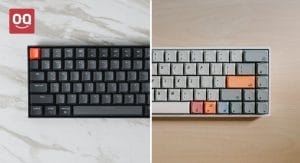Recently, one of our readers asked us how they could tell if a keyboard was mechanical or not. This is actually a pretty good question since there are quite a few different types of keyboards on the market these days, and people often get confused.
Pull off one of the keycaps of your keyboard and take a look at the switch underneath. If you see a physical switch, then you know it’s mechanical. If you are not allowed to do that, tap on the keys and listen for a click. That’s another way to identify a mechanical keyboard.
This article will look closely at what makes a keyboard mechanical and some other useful ways to differentiate between a mechanical and a membrane keyboard.
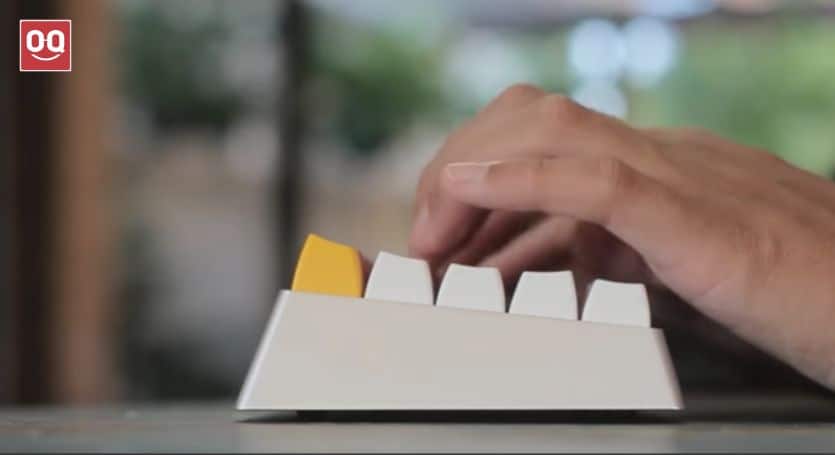
Mechanical keyboards are called “mechanical” because they have physical switches under each key. When a key is pressed, the switch is activated, and a signal is sent to the computer.
All the other features you get with a mechanical keyboard, such as the backlighting and macros, are just bonus features. The main thing that makes a keyboard mechanical is the switches.
Das Keyboard says, “You could have the same keycaps as a regular keyboard, but it will still be mechanical because of its use of switches.” (Source)
There are different types of mechanical switches, but they all share the same basic principle. By trying out different switches, you can experience different “flavors” of mechanical keyboards.
Difference between membrane and mechanical keyboards
There are plenty of differences between the membrane and mechanical keyboards. I won’t get very technical here, but I’ll list some of the more important and noticeable ones:
| Mechanical Keyboard | Membrane keyboard |
|---|---|
| It has an actual physical switch beneath each key. | It has a layer of rubber or silicone beneath the keys. |
| It does produce a louder, sharper sound when you press a key. | It doesn't produce any sound when you press a key. |
| It gives a tactile feel while typing. | It gives a "mushy" feel while typing. |
| Build-quality is sturdier and last longer. | Build-quality is not very good and doesn't last longer. |
| More expensive | Less expensive |
How to tell if your keyboard is mechanical?
As you can see from the table above, there are quite a few noticeable differences between the membrane and mechanical keyboards. So, it’s not going to be too hard to tell which one you’re using. Here are a few tips:
1. You can feel the difference between keystrokes
If you’re not sure whether the keyboard you’re using is mechanical or membrane, try typing on it and see how it feels. Typing on a mechanical keyboard feels much more satisfying and precise.
- Each keystroke is accompanied by a loud “click” sound. But membrane keyboards have a “mushy” feel since there’s no physical switch under each key.
- You get tactile feedback every time you tap on a key, letting you know that the keystroke has been registered. But you won’t get this tactile feel on a membrane keyboard.
- The keys on mechanical keyboards are also generally more durable and feel more solid than membrane keys.
2. Check the key switches
If you want to be absolutely sure, the best way to tell is to take a look at the key switches. As I’ve already mentioned a couple of times, each key on a mechanical keyboard has an independent switch.
Take a keycap puller (or use your fingers) to remove a keycap and check the switch underneath. If it’s a mechanical keyboard, you should be able to see a physical switch. It will look something like this:
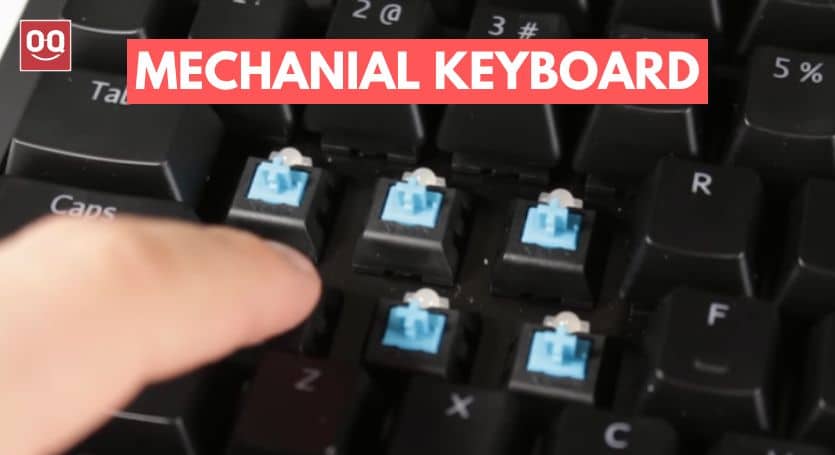
On the other hand, if it’s a membrane keyboard, there won’t be a physical switch. Instead, you’ll see a thin rubber membrane. It will look something like this:
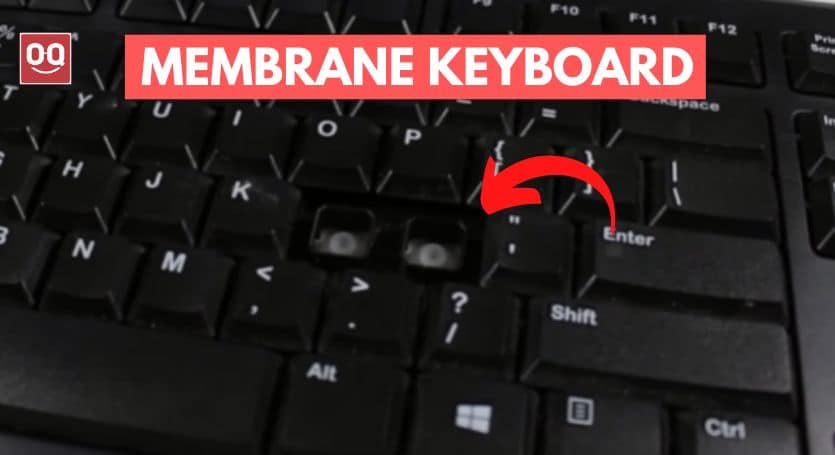
3. Mechanical keyboards are often thick
Mechanical keyboards are often thicker than membrane keyboards since they have to accommodate switches, stabilizers, and other hardware.
Also, as you can see in the image (attached below), the keycaps on mechanical keyboards are often taller than on membrane keyboards. Therefore, the overall profile of a mechanical keyboard is generally taller as well.
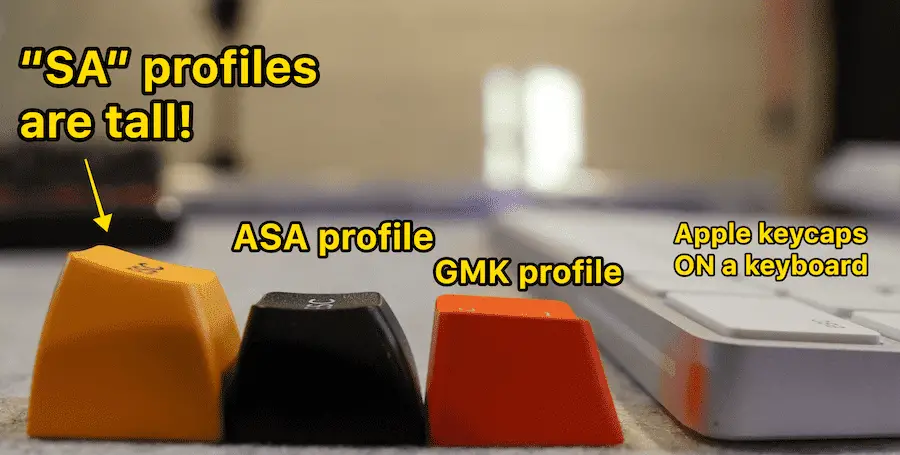
Image collected from keepnews.com
There are flat keyboards like Apple’s Magic Keyboard, but those use a butterfly switch which is a different story.
4. Check the packaging of your keyboard
By now, you should be able to tell whether your keyboard is mechanical or membrane. But if you’re still not sure, another way to check is to look at the packaging or documentation that came with your keyboard.
Most mechanical keyboards will mention the type of switches they use in the product description. For example, the keyboard might be described as a “Cherry MX Brown mechanical keyboard”.
Also, mechanical keyboards are often more expensive than membrane keyboards. So, if you paid a lot of money for your keyboard, chances are it’s a mechanical one (but this is not always the case).
Are mechanical keyboards really better?
Yes, mechanical keyboards are definitely better than membrane keyboards in a lot of ways. But that doesn’t mean they’re perfect. They have their own set of pros and cons.
Here is a quick list of advantages and disadvantages of mechanical keyboards:
PROS
- More satisfying to type on
- More durable
- More precise
- Better ergonomics
- Customizable
CONS
- It Might be too loud for some people
- More expensive
- Requires more maintenance
- Takes up more space
Recommended Mechanical Keyboards for You:
Final words
Mechanical keyboards are awesome. They’re well-built, have a great feel, and are just fun to use. No matter whether you’re a gamer, a programmer or just someone who likes to type a mechanical keyboard is a great investment.
But, with so many different types of keyboards on the market, it can be tough to tell which one is mechanical and which isn’t.
In general, you can usually tell if a keyboard is mechanical by looking at the switches. If the switches are individual and exposed (i.e. you can see the little metal contacts on the bottom), then it’s probably a mechanical keyboard.
Hopefully, this article has helped clear some things up. If you have any further questions, feel free to leave a comment below.






